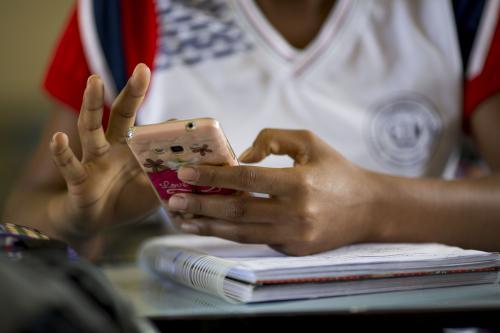.jpg)
Mobile compatibility and on-the-go betting continues to set the standard at the best offshore sportsbooks, making them a top choice for US sports bettors seeking reliability and performance in 2025.
A new study highlights the way COVID-19 has placed children at risk of online sexual exploitation and abuse – and how across the world, those put in place to protect children from such violence are facing unprecedented challenges.The study was conducted by Associate Professors Michael Salter and Tim Wong, and funded by the Australian eSafety Commissioner. By interviewing law enforcement officers and frontline responders across the globe, the study found that the majority of professionals reported increased cases of online sexual exploitation and abuse, including increased numbers of child sexual abuse material, online grooming, activity in online abuse communities, online risk-taking by minors, and live streaming of abuse materials.
On top of that, the study also found that the increased reporting of such cases were not mirrored by an increase of victim identification and support, revealing the alarming magnitude of challenges faced by professionals responsible for preventing and responding to online child sexual exploitation and abuse during the pandemic.
This report highlights the frustration felt by many investigators around the world at the lack of safety protections online platforms have in place to protect children from harm.
The study also spotlights the way the pandemic directly resulted in an increased number of online child sexual exploitation cases, primarily as a function of expanded online presence for both children and adults while pandemic lockdown measures were in place. This was coupled by the fact that while forced from the office, responders had limited access the technology needed to identify and follow-up on pressing cases.
“At first, it seemed like we were getting a lot of reports and we weren’t able to keep up, just because of the analysts being in the office for fewer hours,” said one tipline analyst interviewed in the study. “But when we resumed our full hours, everyone was working the same amount of hours as they previously had. The increase was still there and we still weren’t able to really keep up with all the reports. That’s when I noticed it; it was when we started to come back to the office full time, and there still was an increase in reports that we couldn’t keep up with.”
Key recommendations from the research include:
- Integrating relevant stakeholders into the planning of child protection responses to crises and pandemics;
- Diversifying outreach approaches for the delivery of online child sexual exploitation prevention and education initiatives;
- Increasing the transparency and accountability measures for technology companies in the prevention, moderation, and reporting of online child sexual exploitation, including a safety by design approach;
- Developing accessible specialised support options for victims and survivors of online child sexual exploitation; and
- Developing robust statistical measures of offender behaviour and children’s risk behaviour online, and use such data to better assess the impact of such situations on children’s online safety.
Read the study in full on End Violence’s Knowledge Platform.

